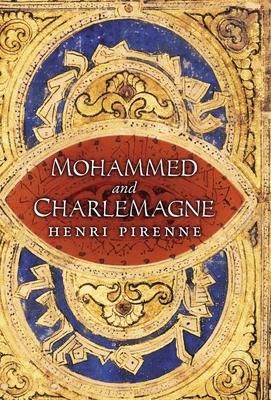Mohammed and Charlemagne, the last book penned by Belgian historian Henri Pirenne before his death in 1935, is in many ways the culmination of his lifelong study of medieval history. As Professor of History at the University of Ghent from 1886 until 1930 (with a brief hiatus during Germany's invasion of Belgium during World War I), Pirenne contributed many works to the study of medieval Europe. Not the least of these is the present volume, left unfinished at the time of his death but meticulously edited and completed by his son, Jacques. Here Pirenne expounds upon the question that preoccupied him throughout his academic career: how and when did the transition from the ancient to the medieval world occur? Rather than settling on the standard answer among most historians of his time-that the pivotal moment of this transition was the barbarian invasion of Rome-Pirenne pushed the paradigm shift forward to the spread of Islam in the seventh century. In the course of underpinning this hypothesis, he provides the reader with concise yet symptomatically detailed pictures of Europe before Islam, during Islamic expansion, and during its aftermath in the early Middle Ages. Pirenne's focus on the convergence of Islamic and European cultures offers all readers, regardless of their familiarity with medieval history, a distinctive and illuminating approach to those fascinating times. This timely book is of special relevance in our own time, as a deeper and more universal grasp of the dynamic between the Abrahamic faiths is so urgently needed.

Mohammed and Charlemagne, the last book penned by Belgian historian Henri Pirenne before his death in 1935, is in many ways the culmination of his lifelong study of medieval history. As Professor of History at the University of Ghent from 1886 until 1930 (with a brief hiatus during Germany's invasion of Belgium during World War I), Pirenne contributed many works to the study of medieval Europe. Not the least of these is the present volume, left unfinished at the time of his death but meticulously edited and completed by his son, Jacques. Here Pirenne expounds upon the question that preoccupied him throughout his academic career: how and when did the transition from the ancient to the medieval world occur? Rather than settling on the standard answer among most historians of his time-that the pivotal moment of this transition was the barbarian invasion of Rome-Pirenne pushed the paradigm shift forward to the spread of Islam in the seventh century. In the course of underpinning this hypothesis, he provides the reader with concise yet symptomatically detailed pictures of Europe before Islam, during Islamic expansion, and during its aftermath in the early Middle Ages. Pirenne's focus on the convergence of Islamic and European cultures offers all readers, regardless of their familiarity with medieval history, a distinctive and illuminating approach to those fascinating times. This timely book is of special relevance in our own time, as a deeper and more universal grasp of the dynamic between the Abrahamic faiths is so urgently needed.